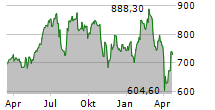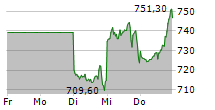Eli Lilly shares recently experienced a notable decline to $725, exactly as analysts had predicted on March 21, raising questions about whether this price floor will hold. Recent developments provide grounds for optimism, particularly regarding the company's breakthrough experimental drug Lepodisiran. This treatment demonstrated remarkable efficacy in lowering lipoprotein(a) - a particularly dangerous form of cholesterol previously unresponsive to conventional medications like statins - by an impressive 94 percent over a six-month period. The market potential is substantial, with approximately a quarter of the global population living with this genetic risk factor that significantly increases the likelihood of heart attacks and strokes. Adding to investor confidence, Goldman Sachs recently upgraded Eli Lilly from "Neutral" to "Buy," maintaining their $888 price target and describing the company as the "premium revenue growth driver in the industry."
Battling for Billion-Dollar Markets
Sollten Anleger sofort verkaufen? Oder lohnt sich doch der Einstieg bei Eli Lilly?
The pharmaceutical giant is actively competing in multiple high-value therapeutic areas. In the race to combat dangerous cholesterol levels, Eli Lilly's approach offers a particularly attractive proposition: a single injection of Lepodisiran remains effective for six months. Meanwhile, the company is making substantial inroads in the obesity treatment sector, with Goldman Sachs projecting its once-daily weight loss medication Orforglipron to potentially generate peak sales of $23.5 billion by 2035 - significantly exceeding general market expectations. These developments could provide the catalyst needed to drive the stock upward following its recent correction, potentially offering an attractive entry point for investors interested in the company's strong growth prospects.
Ad
Eli Lilly Stock: New Analysis - 09 AprilFresh Eli Lilly information released. What's the impact for investors? Our latest independent report examines recent figures and market trends.
Read our updated Eli Lilly analysis...



